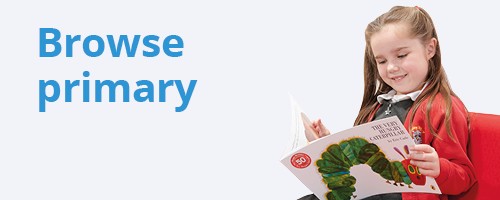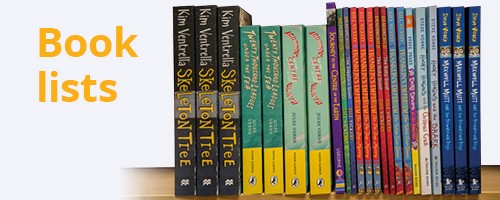Schools please note: due to the summer holidays we will automatically hold all school books and furniture orders due between Wednesday 16 July and Monday 1 September 2025. Delivery will resume from Tuesday 2 September 2025. If your school remains open for deliveries during the summer and you would like to receive your order during this time, please get in touch in advance by calling 0121 666 6646 or emailing hello@peters.co.uk.
For help, advice and telephone ordering call our team on 0121 666 6646
Are you sure you wish to delete this basket?()
This action cannot be undone.
Sorry, something went wrong
Please report the problem here.
Very Short Introductions for Curious Young Minds: The Invisible World of Germs – Isabel Thomas Q&A

May 3rd 2022
Isabel Thomas is a science writer and children's author who has written more than 180 books about science for primary schools. Her school picture books have won prizes including the the Royal Society Young People’s Book Prize, the Association of Science Education Book of the Year and the Blue Peter Book Awards. Her picture book Moth: An Evolution Story, was also nominated for the Kate Greenaway Medal.
Isabel's latest book is The Invisible World of Germs, the first in the new Very Short Introductions children's series from Oxford.
Tell us a bit about yourself, did you always want to be an author? What do you enjoy most about writing science books?
I didn’t always want to be an author. As a child I didn’t even know that was an option! I grew up in a low-income single parent family, and we didn’t know anyone who worked in a creative career. I don’t remember any author visits at school in the late 80s and 90s, but I went to four different primary schools so may have just missed them. (I also missed learning my times tables and how to tell the time on an analogue clock!)
School was my world, and science became my favourite subject. It fed my curiosity and seemed to promise that with hard work and enough knowledge, anything was possible. My mum was my role model, working hard at two jobs to keep us afloat. By haunting the school library and the local library, by reading widely and wildly beyond my A-level physics, chemistry, biology, and maths curricula, I managed to win a place at the University of Oxford. The culture shock was extreme, but at the same time I loved being part of something I had only seen from a distance growing up. I was studying sciences, but also became involved in journalism. This brought the first spark of an idea that maybe, just maybe, I could find a way to write for a living.
What is the most interesting fact or story you discovered when writing The Invisible World of Germs?
My degree introduced me to epidemiology and the fascinating science that features in The Invisible World of Germs. It was a joy to return to this subject to write the book. Much has changed of course, but I also rediscovered stories that had enthralled me as a student – including the fascinating biographies of scientists who made huge leaps of imagination to understand the role of microbes and viruses in infectious disease. One of my favourites is the story of Selman Waksman, Elizabeth Bugie and Albert Schatz, whose work has given us most of the antibiotics we use today.
What do you enjoy most about writing KS1 & KS2 science curriculum books?
Writing about science for young people is a joy. To be given the time and space to deep-dive into an area of research, to find out what is most fascinating and mind-boggling, and to bring that wonder to the most curious audiences. One of my favourite parts of writing The Invisible World of Germs was to learn more about the human microbiome – the ‘germs’ that live within us and outnumber our own cells. Understanding of the microbiome and how it helps to keep us healthy has exploded in the years since I left university.
Is there such a thing as a ‘good’ germ?
Perhaps most importantly, writing the book felt like an opportunity to reassure young readers – who are living through a pandemic – that not all microbes and viruses are germs that cause disease. Most are completely harmless and many help to keep us healthy. As we get to know germs better, doctors and scientists are even finding new ways to harness their superpowers to do good, for example by storing carbon to combat climate change, or by digesting plastics to tackle pollution.
I hope this KS1 & KS2 science curriculum book inspires young readers to keep finding out about the world’s tiniest creatures, and to become the microbiologists and epidemiologists of the future, helping to solve some of the world’s trickiest problems.
The Invisible World of Germs is out on 5th May 2022.
Follow Oxford Children’s on Twitter @OxfordChildrens and on Instagram @oxfordchildrens.
To find out more about Isabel’s work, go to www.isabelthomas.co.uk or follow Isabel on Twitter @isabelwriting or on Instagram @isabelthomasbooks.









